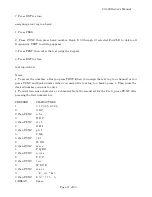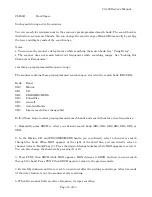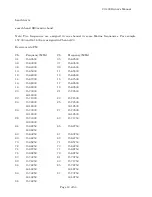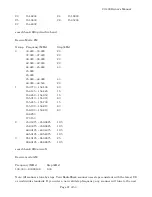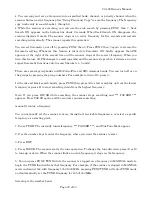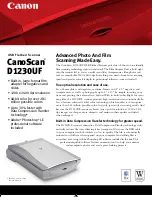
20-428 Owner’s Manual
Page 8 of 50
be heard as a low “hum” in the background of a voice transmission.
DCS (DC) mode
DCS mode sets the scanner to receive transmissions using frequency modulation (FM) with Digital
Coded Squelch (DCS) subaudible data signaling. DCS is very similar to CTCSS, except that a digital
code is transmitted instead of an audio tone. Like CTCSS, DCS allows multiple users to share a
single radio frequency without hearing each other’s transmissions. In your PRO-2055 scanner, the
DCS feature can be used to block the reception of transmissions on a shared channel to only those
that use the DCS tone that you have specified. DCS mode also features a Code Search setting that
allows you to instantly display and store unknown codes into the channel memory. DCS data can
sometimes be heard as a low “purring” sound in the background of a voice transmission. Some DCS
systems transmit a special “turn off code” at the end of each transmission. The turn off code causes a
properly equipped receiver to mute before the transmission ends, eliminating the “squelch tail”
burst of noise the commonly occurs when the signal is lost.
Motorola mode
You can set your scanner so it decodes the talk group IDs used with Motorola Trunking systems.
This setting is called the Motorola mode.
Motorola systems are Trunking systems used primarily by business and public safety groups to
efficiently allocate a small number of frequencies (as few as five) to many groups of users (as many
as several thousand). To do this, each group of users in the system is assigned to a specific talk
group. For example, the east side patrol officers might all be assigned to talk group 2160. One
channel in the system is continuously transmitting data that identifies which talk groups are active
on which channel. In addition, this talk group information is also transmitted as subaudible data on
each active channel.
When the scanner receives a transmission on a channel set to the Motorola mode, it first decodes
the talk group ID data included with the transmission. In the open mode, the scanner stops on the
transmission and displays the talk group ID on the bottom line of the display. In the closed mode,
the scanner only stops on the transmission if the talk group ID matches a talk group ID that you
have stored in the bank’s talk group ID list and have not locked out.
Motorola Trunking systems come in three categories: Type I, Type II, and Type I/II Hybrid. Each
category displays and uses talk group IDs in slightly different ways.
Motorola Type II IDs are in the form FFF-SS, where;
FFF=Fleet ID
SS=Subfleet ID
Type I systems are usually organized with different user groups assigned to different fleets.
Notes:

















